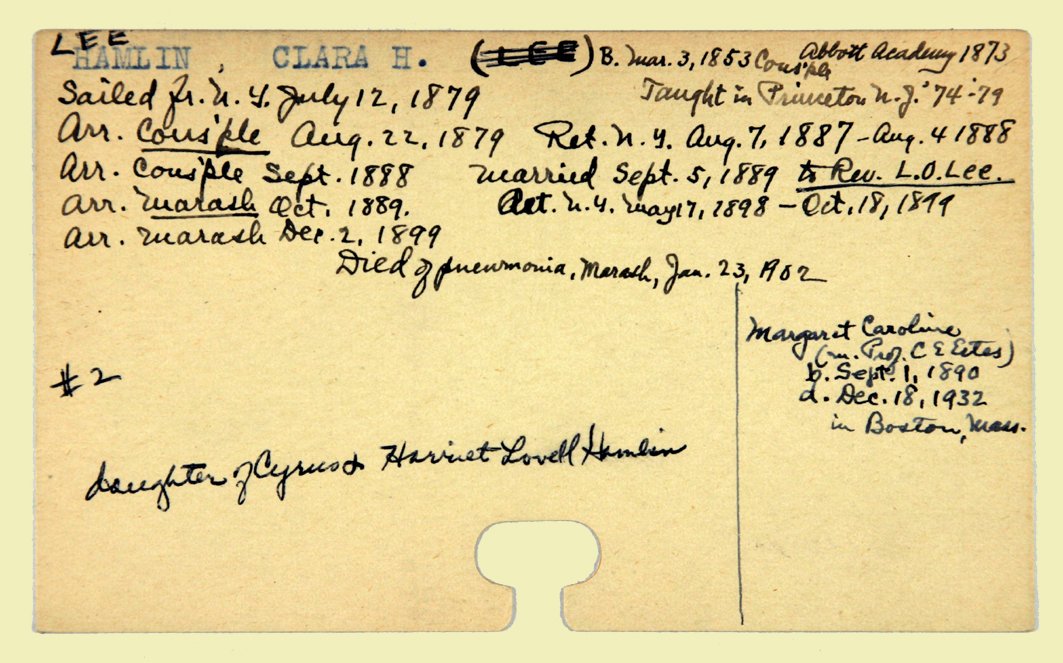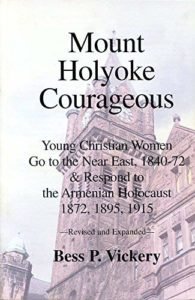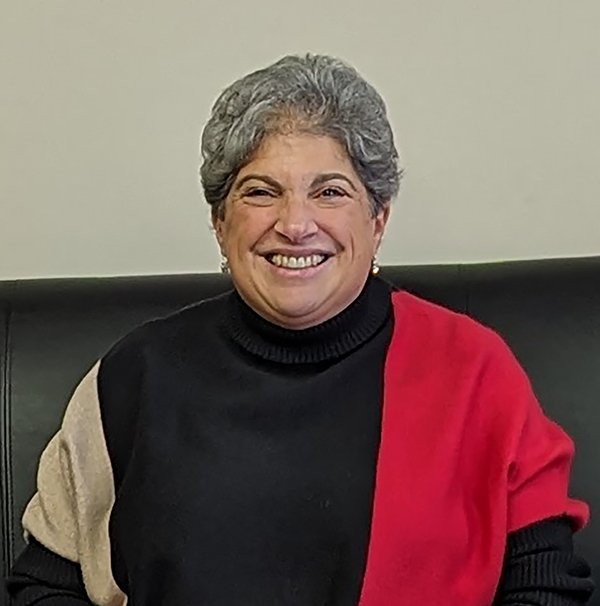
The letter pictured here (and transcribed below) is part of the collection of the Northbridge Historical Society. It was presented to Gregory Jundanian by the Whitinsville Social Library and Society volunteer Carole Brouwer upon hearing about the Armenians of Whitinsville Project, a project supported by the Soorp Asdvadzadzin Armenian Apostolic Church of Whitinsville and Project SAVE Armenian Photograph Archives. At the turn of the century, Whitin Machine Works was the largest textile machinery factory of its kind in the world and attracted many Armenians for work in the foundry. As such, Whitinsville was one of the earliest Armenian communities in the United States.
“The Armenian people who came to work in the Whitin Machine Works (a.k.a. “The Shop”) had a unique history and were an integral part of the labor pool,” according to information on the Northbridge Historical Society website. In fact in the early 1900s, some Armenian immigrants were welcomed and offered housing and employment at the company by its representatives with the assistance of an interpreter in Providence, RI.

“This letter is an incredible testament to life in Marash and to the conditions which Armenians were subjected to at that time,” said Jundanian. It’s a thank you note from missionary Clara Hamlin Lee to Arthur F. Whitin, a member of the founding family of Whitinsville, where many Armenians lived while working at the Whitin Machine Works. Lee was born in Constantinople in 1853 and died of pneumonia in Marash in 1902 according to her personnel card for the American Board of Commissioners for Foreign Missions. She was the daughter of Rev. Dr. Cyrus Hamlin who founded Robert College which at that time was an important institute of higher education for Armenian Protestants in Turkey.

Community volunteer for the Armenians of Whitinsville project and Mount Holyoke College alumna Lisa Misakian offered information from the book Mount Holyoke Courageous (1994, 2000). The book was written by another Mount Holyoke alumna, Bess Pazeian Vickery, whose father came to Worcester from Van in 1895. “In fact, Bess writes in the book that she was born in 1915 on the day that Van was being destroyed,” noted Misakian, who explained that Mount Holyoke Courageous tells the stories of young Christian women missionaries who went to the Ottoman Empire to spread the Gospel, to teach and who witnessed the Armenian Genocide.
 According to the Mount Holyoke Courageous book, said Misakian, “Clara Hamlin Lee’s letters from Marash to her father in Istanbul are considered primary eyewitness accounts and confirmation of the accounts detailed in Amb. Morgenthau’s reports on the planned actions of the Ottoman leaders against the Armenians.” The letter presented to Jundanian is another important example of Lee’s eyewitness accounts and may provide supplemental detail to the letters she wrote to her father. “For this reason, I believe this newly uncovered letter may have historical significance beyond our Armenians of Whitinsville Project,” explained Misakian.
According to the Mount Holyoke Courageous book, said Misakian, “Clara Hamlin Lee’s letters from Marash to her father in Istanbul are considered primary eyewitness accounts and confirmation of the accounts detailed in Amb. Morgenthau’s reports on the planned actions of the Ottoman leaders against the Armenians.” The letter presented to Jundanian is another important example of Lee’s eyewitness accounts and may provide supplemental detail to the letters she wrote to her father. “For this reason, I believe this newly uncovered letter may have historical significance beyond our Armenians of Whitinsville Project,” explained Misakian.
The Armenians of Whitinsville Project is based on the tradition of the memory books that many wrote of their native villages in historic Armenia. “The project intends to explore, document and celebrate this community from earlier times to present. As a snapshot of the diaspora, It hopes to capture something intrinsic about our identity and our history.” explained Jundanian.
Letter from Clara H. Lee to Arthur F. Whitin (Transcribed by Carol Brouwer)
Constantinople, June 29th 1896

Dear Mr. Whitin,
Some three months ago I received word from Mr. Peet our treasurer of $200.00 contributed by you for the sufferers in Marash. My father also wrote me about your gift about the same time. I am filled with shame that I did not write to you without delay to thank for the contribution and to tell you how it was spent. I can only ask you to pardon me for my tardiness which was not intentional. The press of work all through this sad winter and spring has been such as I had never before known in my life.
Children and household affairs have been neglected in a way which would have been very wrong but for these peculiar circumstances, and letters which ought to have been written have been deferred like this one, from week to week, and even month to month. I have at last run away from Marash for the summer’s rest and am now with my little Carrie at Kennedy Lodge, Henrietta’s beautiful house at Hissar. We shall doubtless have another hard winter next year, and I hope to go back to the work with new energies after this refreshing change and rest.
I devoted the whole of your $200 to clothing the poor wretched refugees who poured down from Zeitoon to Marash as soon as Zeitoon was open. There were already about 9000 people in Marash who were dependent on relief funds, and when these 1000 refugees poured in, we did not know what to do with them. For about four weeks 450 of them were crowded into a large building that had been erected for public exercises of an Armenian school. The floor was of stone, all the windows were broken, and it was midwinter.
The refugees were, with very few exceptions, destitute of bedding, and they had worn the miserable rags on their backs without change or washing for four months. They were swarming with vermin and I had never before beheld such misery. As the convoys of refugees came in under guard(!) from Zeitoon on several successive days the Moslems of Marash turned out to meet them, and showered them with stones and beat them with sticks as they passed through the streets, their guards making no objection, but rather enjoying the fun. Some were killed thus in the streets. Most of the Zeitoon refugees were men though there were a few women and children. Thousands of these must have perished from want and cold in Zeitoon. We went to work immediately to relieve these poor people, and the Marashlis, needy and suffering as they themselves were, came forward nobly to help. Some contributed boards to cover the stone pavement, some brought soap, rice, dishes etc. and the windows were all covered with paper.
Mrs. Macallum worked the bedding department, and turned out “yorgans” or comfortables as fast as possible, while I employed 70 women at making clothes, and it was thus that I used your money. It not only helped to cloth the refugees, but gave employment to 70 poor widows. You would be touched if you could see how grateful these widows are for work. Though we did our very best, some weeks had passed before the refugees were supplied with the needed bedding and clothing. I used to feel sad indeed as I went to bed those winter nights when the bitter north wind was raging around us, and thought of the refugees stretched out on the stone floor – which had been wholly covered with boards – without any warm covering.
Typhus fever and dysentery were soon raging among them, and we were obliged to open a hospital for them. The diseases proved so contagious that out of 43 who worked in the hospital, including, doctors, nurses, servants, all but one became ill, and ten of them died.
All the time that we were caring for these refugees, we were also distributing aid to 9000 Marashlis, and also to thousands more in the surrounding villages. This was a large family to clothe, was it not? And as I had the charge of the clothing department, I have had enough to do all these months. In March the first boxes of clothing came from Constantinople, and were a great help. It is a subject for thankfulness that all the boxes sent in from Constantinople and other places have reached us safely. Not one has been lost.
The refugees have at length nearly all returned in fear and trembling to their ruined villages. The Red Cross people are giving valuable aid in the line of implements, dishes and seed. If the government would only protect these villages there would be hope that in the course of time they would be able to take care of themselves, though they will certainly need aid for a while. But the prospects are very gloomy, for acts of violence and cruelty are still very frequent and no Moslems are punished for such deeds.

And in Marash itself, while there is now no new special fear or excitement, business is utterly crushed. Strong able-bodied men sit listlessly at home because there is no work to be had, and the widows and orphans lead a hopeless cheerless existence from day to day. Our relief funds are given out, at the rate of 5 cents a head every week! Food is cheap in Marash, but this only enough to buy dry bread, nothing else. The outlook for the next winter is dark indeed. If even these funds fail, hundreds will die of starvation before our eyes. I look forward to the winter with unspeakable dread, and feel a selfish longing sometimes to run off somewhere, where I could not know of the terrible misery that we cannot relieve.
Perhaps it is unkind of me to trouble you with this picture of suffering, but when I get started on it, I don’t always know when to stop. I know you pray for these sufferers, and though our faith is sorely tried, we must believe that God reigns, and that sometime there will be a change. Till then we hope to hold on and do what we can.
With all good wishes
Yours sincerely,
Clara H. Lee
The Armenians of Whitinsville Project
Soorp Asdvadzadzin Church of Whitinsville and Project SAVE Armenian Photograph Archives are partnering to preserve photographs, recipes, stories and anything identifying the character of the Whitinsville Armenian community that people would like to share. We are interested in the community as defined by the people who currently live in Whitinsville or those who have lived and worked in the past across all time periods. The purpose of this living memorial is to celebrate today’s community, preserve our past for generations to follow and have some fun in the process.
Our ancestors came to this country with little, but they did have their hopes and dreams, something embodied in all of us today. We are who we are because of their struggles and courage. We’d like to honor them starting with the photographs, recipes and stories that we each may have. The information will be housed on a website dedicated to the Whitinsville Armenian community.
Sometimes people had photographs with them when they came to this country, but if not, they valued having a photograph made here as evidence of their ability to survive and build a new community. The paradox is that many times when people die, their photographs are discarded because their descendants don’t know the people in the photograph or understand the significance or context of what they are holding. Our idea is to go through photographs together, scan the more important ones and record the stories.
Our goal is to bring people together over these treasures. If there are original photographs that people might like to preserve and make publicly accessible, Project SAVE Archives will add the original photographs to their archive for researchers and the public.
If your family passed through Whitinsville 100 years ago or lives there still today, and you are interested in participating either as a volunteer or by contributing photographs, recipes, stories, music or video, please email armeniansofwhitinsville@gmail.com.



Thank you. Reading the letter was an important reminder that terrible violence and calamities were happening to us well before 1915.
I have a written history on Whitinsville done by Rose Alahverdian. It’s yours if you want it and I can mail it to SAVE as well.
This is amazing. Thank you for working to preserve this important history of the Armenian diaspora. I am a Whitinsville gal.
Thanks for all your much appreciated work. My roots are in Whitinsville and my Grandfather owned a property on D Street in which he was sold to by his employer Whitin who he worked for many a year.
Hi John, Just seeing this comment some months later. Could you go to the website at armeniansofwhitinsville@gmail.com, and reach out to us. We’d love to talk to you. Thanks. Greg
Historian Everett Ladd “Ted” Widmer is the Great Grandson of Reverend Cyrus Hamlin. Dr. Widmer is the author of “Lincoln on the Verge: Thirteen Days to Washington” (2020) and many other historical works.
My grandparents were Mimish and Hagop Badagian and lived on D Street.
Hi Lisa, Just seeing this comment some months later. Could you go to the website at armeniansofwhitinsville@gmail.com, and reach out to us. We’d love to talk to you. Thanks. Greg
My grandparents, Bedros and Anna Hagopian lived at 42 D Street from 1921. Bedros and my father, Edward both worked in the foundry. Bedros was a master molder at the Whitin Machine Works. My father was born on D Street as were his younger siblings. My grandparents were from Govdoon and managed to survive the 1915 genocide. Bedros fought with the Armenian Legion of the French Foreign Legion during WWI. I would love to find out more about life in Whitinsville during the 20’s and 30’s. Thanks for doing this wonderful project!